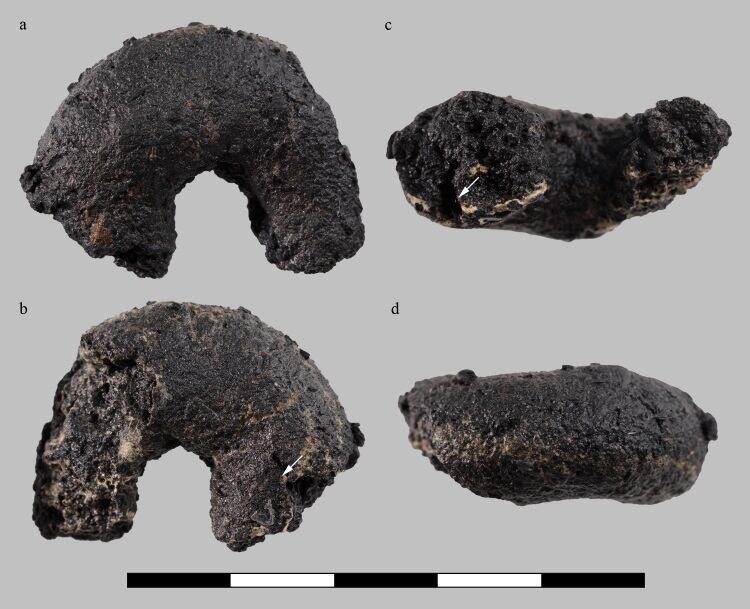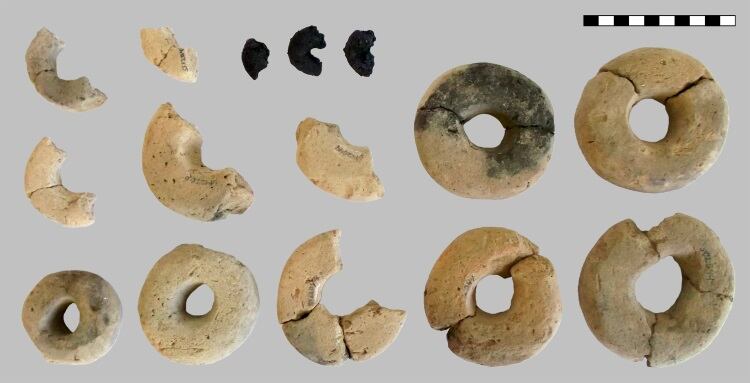
The scientists have uncovered charred remains of grain rings little more than an inch in diameter, believed to have been produced by Late Bronze Age humans around 950-800 B.C.
The early O’s were actually excavated in 1978 – from an ancient Austrian hill fort site called Stillfried an der March – but only recently given a closer look, thanks to radiocarbon dating and scanning electronic microscope imaging.
The study – published in PLOS One – revealed the tiny donuts were made from hulled barley and ‘some (probably hulled) wheat species in unknown proportions’ – presumably mixed with water to form a paste – ‘which was most likely air-dried or baked a low temperature prior to charring.’
The dig unearthed numerous foodstuff at the site, including seeds, fruits, fragments of porridge, chunks of bread – ‘showing clear differentiation between crumb and crust’ – and a ‘third type of material (nicknamed Hirsotto)… identified as a porridge-like preparation of coarsely crushed grains of barley, broomcorn millet and rye brome (Bromus secalinus).’
Not a snack
However, the scientists concluded the three tiny spherical objects from pit V5400 were not created for consumption, either as a snack or breakfast cereal, as they differed in both shape and the production processes involved.
This was compounded by the fact that they had also found 14 larger rings and ring fragments made of clay – possibly loom weights used for weaving. One of the pits also contained seven bodies and ‘the deliberately deposited carcasses of domestic animals, as well as apparently tamed wild animals, some of which had died of old age, such as wolves, hares and red deer.’
The working theory is the cereal rings had a ritual function.
Loom weights were often placed in Bronze Age graves for the deceased to take with them into the afterlife. Bread products were also part of many sacrificial offerings from the ancient world.
‘Comparison to the extant data on food preparations at the site, combined with the “odd” find context strongly suggest that the three annular objects had most likely not been produced for consumption, but had rather served some specific purpose prior to or during the deposition of the remainders of the burnt house in the pit,’ wrote the authors.
The recent study has unearthed yet more critical information about our forbearers and their agricultural and food production practices.
“Prehistoric bakers produced so much more than just bread,” said lead author Andreas Heiss.
Study:
Authors: Andreas G. Heiss, Ferran Antolín, Marian Berihuete Azorín, et al.
PLOS One, published: June 5, 2019
https://doi.org/10.1371/journal.pone.0216907


